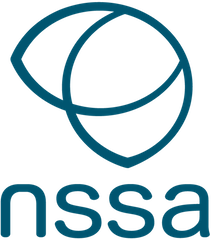(book)Shelf-Induced Seizures: Reading Epilepsy and Reflex Seizures
Was it about to happen? Was it finally about to happen?!
“Blood of my blood….” I whispered. “…. And bone of my bone.” she answered softly. Neither of us could finish the vow, unspoken words hung between us…….
EEG scientists crouched nail bitingly over their monitors. Registrars peered over each other’s shoulders into the confines of ‘Bed 9’. Nurses paused their ceaseless toils, pretending not to be listening. A shaky but determined voice continued…………..
“So long as we both shall live……...”
The tension was unbearable. Was it about to take place? Was reading Diana Gabaldon’s romance novel Outlander finally going to trigger a seizure in our bed 9 patient? For I kid you not, our Video EEG monitoring patient, ‘Bed 9’, de-identified as “Jamie” for this blog post, was conjectured to have ‘reading reflex epilepsy’.
As with many hospitals, we also have a Video EEG monitoring lab where patients are routinely brought in for one or two weeks to characterize their seizures, often for work up for possible future surgery. Many of these patients participate in our CERETEC program, where nurses intravenously administer a radioactive trace during or immediately after a seizure and a SPECT scan is then able to aid localizing information for seizure origin and focus. However, despite reduced epilepsy medications over the course of his VEM administration, Jamie was heading into his second week of video EEG monitoring without a seizure to be seen. This was when the consultant raised the slight possibility, based on patient histories, that Jamie may have the reading variant of reflex epilepsy. It was suggested that the mere act of reading could potentially coax an elusive seizure into the light of day, or more specifically, into the flickering lights of our VEM lab on the ward 6 East.
Reflex seizures are epileptic events that are reliably triggered in response to a specific sensory input or an activity performed by the patient. The term Reflex Epilepsy more broadly refers to a syndrome in which all seizures are precipitated by such stimuli [1]. Such epilepsy types were first recognised in the 2nd century AD with detailed descriptions of such epilepsy provided by Marshal Hall in 1850 [2, 3]. Reflex epilepsy and reflex seizures were classified in the 2001 International League against epilepsy (ILAE) [1]. However more recently, ILAE definitions leave Reflex Seizures to be identified according to seizure type and etiology in the individual case [4,5].
The causes of reflex seizures are diverse and encompass various visual stimuli, as well as cognitive processes such as thinking and reading, sensory experiences like music and eating, and even physiological responses like orgasm or startle reflex [3]. We have encountered cases where patients claimed to have experienced seizures in response to seemingly innocuous activities such as tooth brushing or taking showers - claims which have led us to having some very unusual EEG recording sessions!
Broadly, reflex seizures are believed to originate from areas of cortical hyperexcitability that overlap with regions typically associated with cognition, motor function, or sensory processing [3,6]. When a critical mass of these areas is engaged during the behaviour in question, in this case reading, the excitation spreads, leading to epileptogenic discharges.
Reading Epilepsy is a rare subtype of reflex seizure that predominantly affects males and typically emerges in early adulthood or late adolescence [7]. In the case of Reading Epilepsy generally, and in Jamie more specifically, the Middle Frontal Gyrus working memory areas, motor strip and Brodmann’s area 6 were thought to be prominent candidates for the epileptogenic zone. Working memory and motor areas are involved in the mechanics maintaining a linear narrative and physically producing words. Brodmann’s area 6 is involved in the cognitive process of converting graphemes into phonemes and exhibits a connection with and influences the activity of the thalamus, claustrum, and right inferior frontal gyrus during seizure episodes [8].
But why, you might ask were seizures not triggered in Jamie every day, given the fact that VEM patients have very little to do other than sit in their room all day flicking through their phones, reading Instagram posts, reading through the news on their phones or writing and receiving text messages. The consultant believed that reading a physical book may induce the seizure more readily due to the wider horizontal scanning motion when reading a physical book, compared to the narrow page and reliance on vertical scrolling on our phones. However, I haven’t been able to find anything in the literature to corroborate this.
In general, reflex seizure are more easily triggered when the material being read possesses a heightened emotional content, which necessitates activation of a broader network of distributed areas. It has also been proposed that the involvement of mesiotemporal structures within these intricate networks may contribute to seizure induction through the emotional content of the reading material. [9] For this reason, our Consultant felt that reading a dry textbook would not suffice. Instead, Jamie was instructed to read from a work of fiction with lyrical, emotive and descriptive writing. And so it was that 6 East was regaled with this enthralling moment of passion in the Scottish highlands……..
“…but the unspoken words hung between us. …..Finally she ……..smiled crookedly……….”
And then, like a bear coming out of hibernation, the terrifying ictal cry bellowed throughout the corridors of 6 East. And so it was - reading Outlander achieved what a reduction in medications could not - a seizure was evoked, a Ceretec injection was deftly followed by a flush and we had managed to capture and characterize Jamie’s elusive seizure! Our EEG showed prominent left frontal, and left temporo-parietal spikes which went on to generalize, which is characteristic of Reading Epilepsy electrophysiology.
Jamie’s prognosis was favourable. Surgery was not considered to be a safe option given the epileptogenic zone encompassed important working memory and motor areas. However, his epilepsy was able to be managed through behavioural modification, the avoidance in particular of reading hard copy and descriptive literature and an adjustment of medications. Typically reading epilepsy resolves with age and for this reason, Jamie was able to hold some hope for a seizure free future.
And so, it was another successful day in the life of an EEG scientist with our EEG playing a significant role in seizure characterisation and localisation. I’ll tell you about our tooth brushing and ‘shower epilepsy’ another time!
References
[1] Engel J, Jr., International League Against E (2001). A proposed diagnostic scheme for people with epileptic seizures and with epilepsy: report of the ILAE Task Force on Classification and Terminology. Epilepsia, 42:796-803.
[2] Panayiotopoulos CP. 2005. Reflex seizures and reflex epilepsies. In The Epilepsies: Seizures, Syndromes and Management. Oxfordshire (UK).
[3] Okudan ZV, Ozkara C (2018). Reflex epilepsy: triggers and management strategies. Neuropsychiatr Dis Treat, 14:327-337.
[4] Fisher RS, Cross JH, D'Souza C, French JA, Haut SR, Higurashi N, et al. (2017). Instruction manual for the ILAE 2017 operational classification of seizure types. Epilepsia, 58:531-542
[5] Scheffer IE, Berkovic S, Capovilla G, Connolly MB, French J, Guilhoto L, et al. (2017). ILAE classification of the epilepsies: Position paper of the ILAE Commission for Classification and Terminology. Epilepsia, 58:512-521.
[6] Koepp MJ, Caciagli L, Pressler RM, Lehnertz K, Beniczky S (2016). Reflex seizures, traits, and epilepsies: from physiology to pathology. Lancet Neurol, 15:92-105.
[7] Xue LY, Ritaccio AL (2006). Reflex seizures and reflex epilepsy. Am J Electroneurodiagnostic Technol, 46:39-48.
[8] Italiano D, Ferlazzo E, Gasparini S, Spina E, Mondello S, Labate A, et al. (2014). Generalized versus partial reflex seizures: a review. Seizure, 23:512-520.
[9] Miller S, Razvi S, Russell, A (2010). Reading Epilepsy. Pract Neurol 2010; 10: 278–281
Kaelasha Tyler
Neurophysiology Scientist - Austin Health

